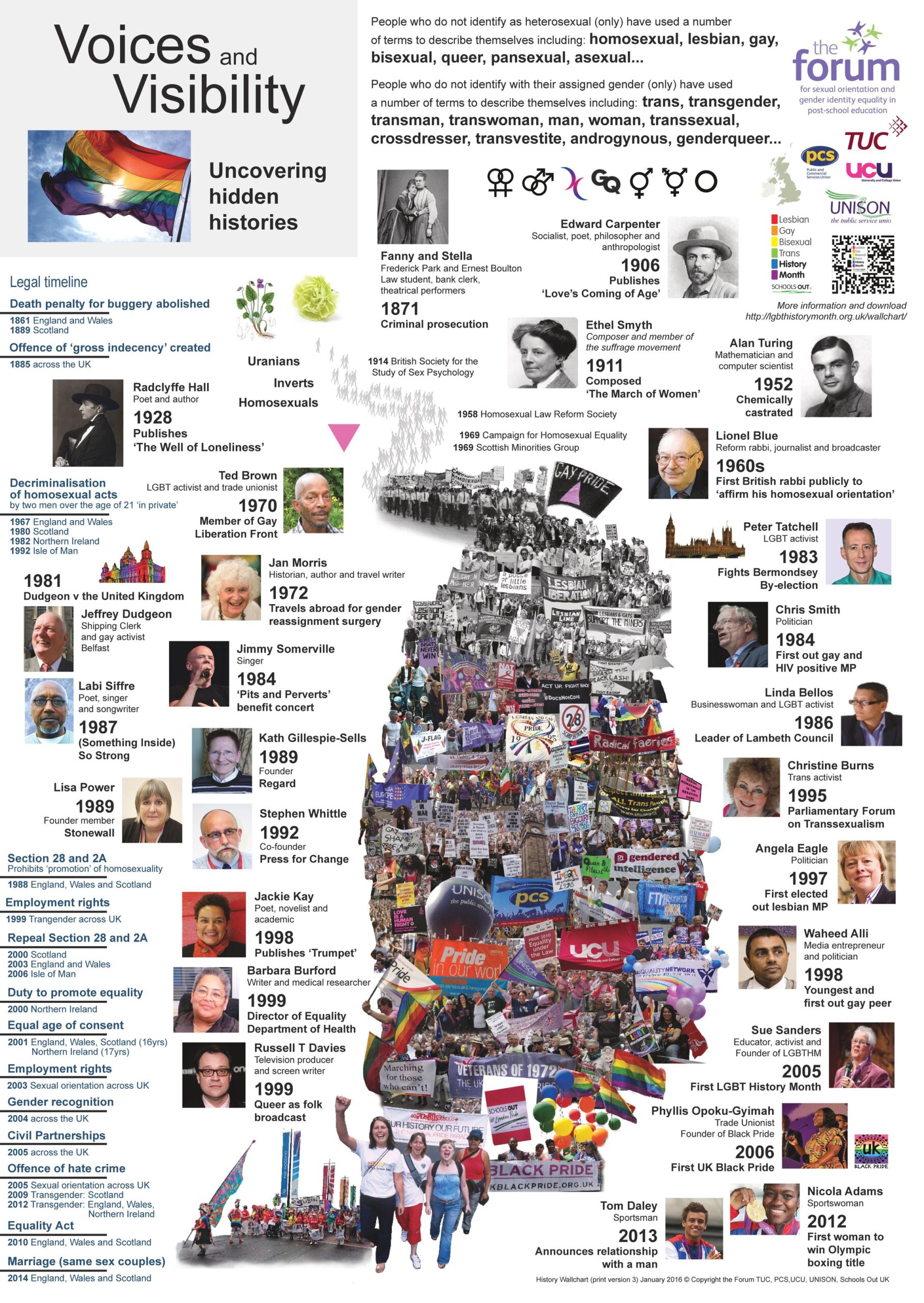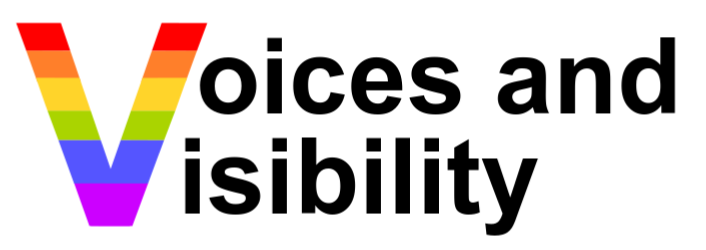Rainbow Flag
The most known symbol associated with the LGBT+ movement is the rainbow flag. The rainbow flag, known also as the rainbow Pride flag was designed in 1978 by Gilbert Baker for the San Francisco Gay Freedom Celebration. However the flag has since gone on to represent the wide spectrum of marginalised persons and sexualised identities around the world, especially in their effort for recognition, self-empowerment and equal rights. The flag is not a true rainbow, instead all the colours are depicted as horizontal stripes.
The original flag had eight colours, Pink which symbolised sexuality, Red for life, Orange for healing, Yellow for the sun, Green for nature, Turquoise for art, Indigo for harmony and Violet for the spirit. The next version of the flag removed the pink due to a shortage of fabric. The contemporary version, which has been used since 1979 is a six-stripe version where the Turquoise and Indigo were changed into a single stripe of Royal Blue. So, the new flag now goes as follows; Red, Orange, Yellow, Green, Royal Blue and Violet.
In 2017, the city of Philadelphia updated the flag to include a black and brown stripe at the top. This was done to represent the LGBT+ communities of colour.
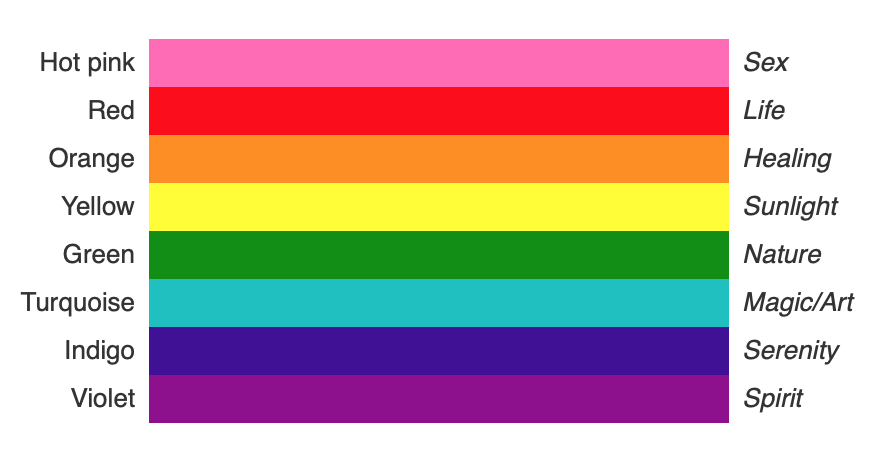
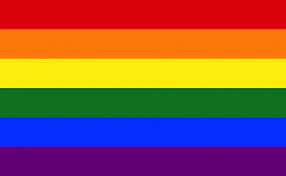
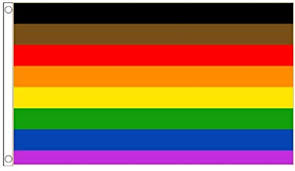
LGBT+ Progress Flag
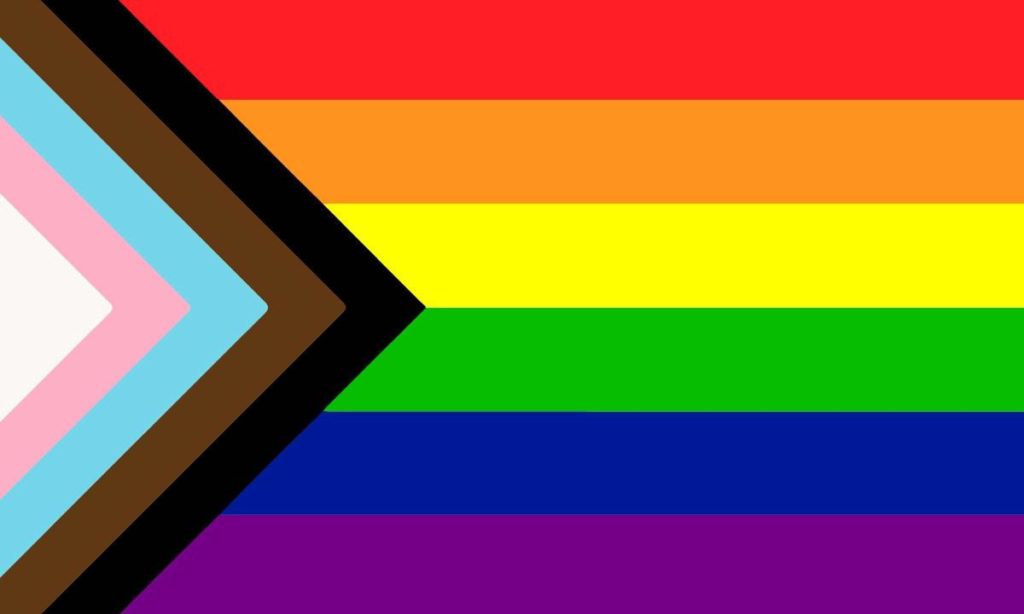
In 2018, Daniel Quasar a graphic designer, dramatically redesigned the flag. In addition to the black and brown stripes, he also added stripes of pink, light blue and white from the Trans flag. This new flag called the Progress Pride Flag was designed to also represent the LGBT+ communities of colour, the trans community, people living with HIV, and people no longer living. The main section is left as the six-stripe flag, and the chevron on the left with the new colours was designed to represent the ongoing march towards progress.
Bisexual
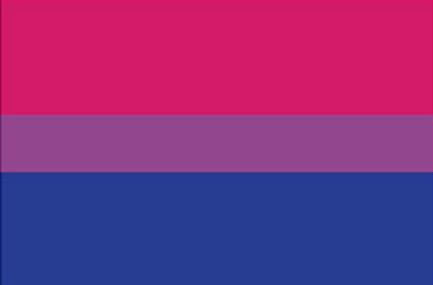
The bisexual pride flag was introduced in 1998 by Michael Page as an effort to give bisexual people their own rallying symbol similar to the gay rainbow flag. The pink represents attraction to same sex, related to the pink triangle. The blue triangle represents opposite sex attraction and the purple gained from mixing the two represents attraction to both same and opposite sex people.
Bi day of visibility is the 23rd September
Pansexual
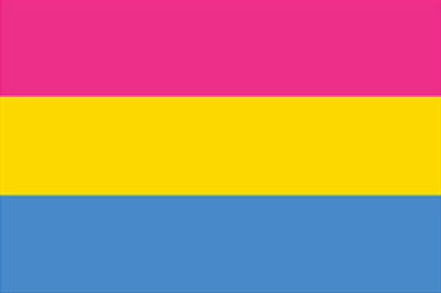
Pansexuality is defined as being attracted to people regardless of their gender or sex, which, unlike the strict definition of “bi”-sexual, includes those who fall outside the traditional gender binary. The pink represents being attracted to women, the blue being attracted to men, and the yellow for being attracted to everyone else. The flag emerged in 2010.
Pansexual Day of Visibility is the 24th May
Polysexual
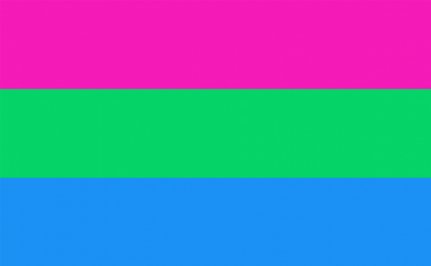
Polysexuality is the attraction to multiple genders, but not all. A middle ground between bisexuality and pansexuality, it is centred more around attractions to femininity and masculinity rather than gender itself.
The flag was first published onine in 20102 The pink represents attraction to females; the blue for males. The green is for an attraction to those who don’t conform to either gender.
Asexual
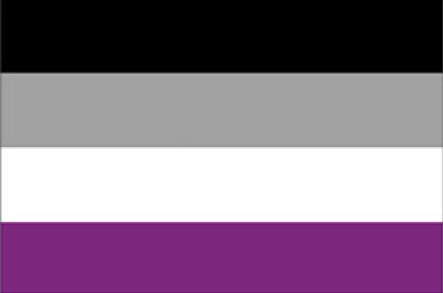
Asexuality is a lack of sexual attraction or a low interest in sexual activity. The asexual community is relatively new and not widely known, quite possibly because a lack of sexual interest causes much less public outcry than an “inappropriate” sexual interest.
The flag was created in 2010 through a process spear-headed by the Asexuality Visibility and Education Network (AVEN) and voted for online by the AVEN asexual community.
Asexual awareness week is 22nd – 28th October
Intersex

“Intersex” is a term for people who are born with mixed primary or secondary sex characteristics, making them both female and male. This shows up in approximately 1% of the population, though many recognized forms of it are subtle enough to go undetected for an entire lifetime.
This flag was debuted by Intersex International Australia in July of 2013 as a rallying point for Intersex people, The colours yellow and purple were chosen because they’re seen as fairly gender neutral. The circle symbolizes wholeness or completeness.
Intersex Awareness Day is 26th October
Agender
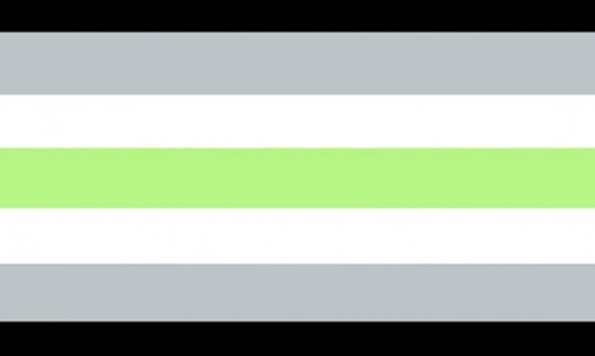
Agender is used to mean having no gender identity (genderless) or having a gender identity, which isn’t female or male, but neutral
The flag was created in 2014. The black and white stripes represent an absence of gender, grey represents being semi-genderless, while the green stripe represents non-binary genders.
Agender Pride Day is 19th May
Transgender
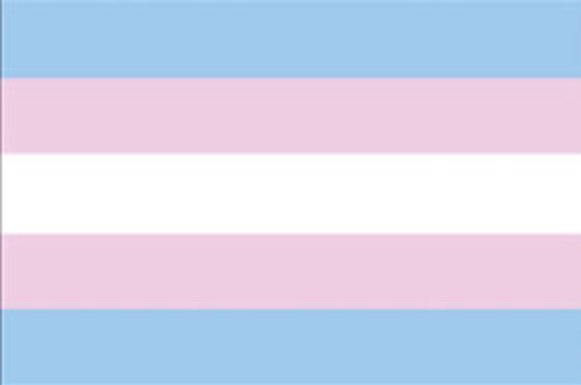
Trans people identify their gender differently to their gender differently to the gender that is associated with their sex as assigned at birth.
The trans pride flag was created by Monica Helms, a trans woman, in 1999. The two colored stripes represent the traditional colors for baby boys and girls, and the white is for those of intersex, neutral, or other genders.
The flag is intentionally symmetric so that however you hang it, it is in the ‘correct’ orientation. Helms says this was to represent trans people finding “correctness” in their lives
International Trans Day of Visibility is March 31st
Trans Awareness Week (2nd week in November) precedes Trans Day of Remembrance (November 20th)
Genderqueer
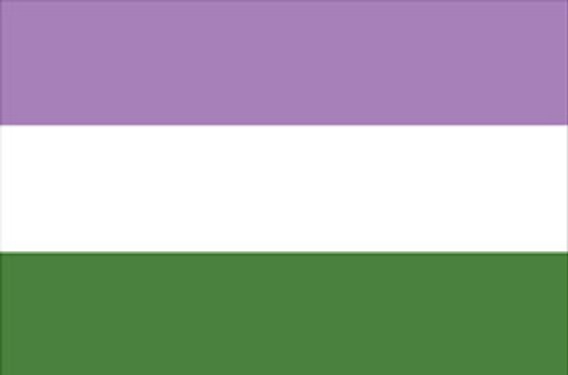
Genderqueer is an inclusive terms for anyone who doesn’t feel like they fit into one of the two standard gender definitions. Unlike most other pride flags, which represent groups of people who ‘are’ something (people who are gay, trans, asexual, etc.), genderqueer is for people who are not either of the traditional 2 genders. It’s a group for people who feel like they don’t fit into the normal definition.
The Genderqueer Pride flag was created by Marilyn Roxie in 2011. The lavender is a mix of the traditional blue and pink gender colours for people who are a little of both. Also represents the “queer” in genderqueer, as lavender is a colour that has long been associated with “queerness”, including gay, lesbian, and bisexual communities. The green is meant to be the “inverse” of lavender for those outside the binary, and the white represents gender neutrality. The white is meant to represent agender identity, congruent with the gender neutral white on the trans pride flag.
Genderfluid
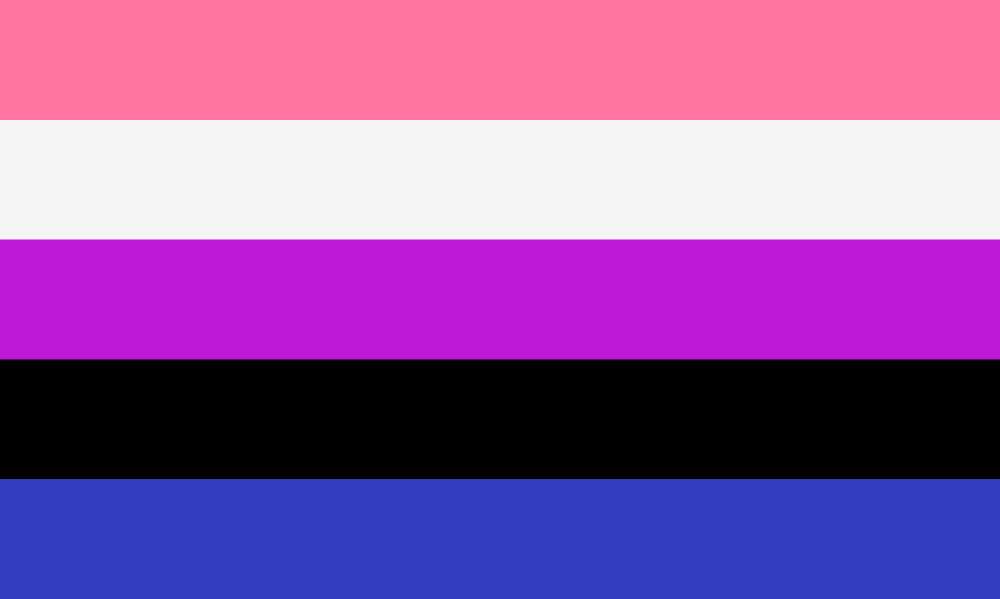
Genderfluid is a term for someone whose gender changes over time. Their gender identity can vary at random or in response to different circumstances. Gender fluid people may also identify as multi-gender, non-binary and/or trans.
The flag was created by JJ Poole in 2012. The colours represent the various states that genderfluid people may find themselves in – pink for feminine, blue for masculine, purple for a mix of the two, white for no gender, and black for all genders.
Non-Binary
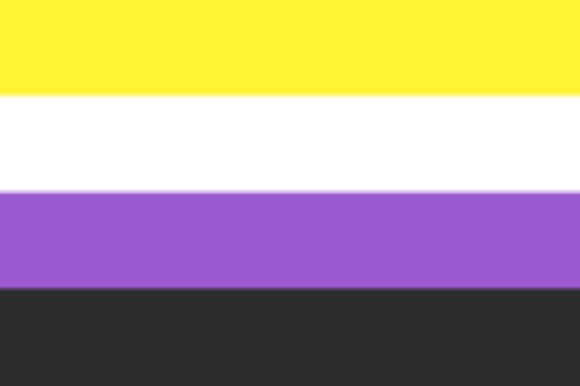
Non-binary is an umbrella term used to refer to gender identity that is beyond the traditional binary genders of man and woman.
The non-binary pride flag was created by Kye Rowan in February 2014 when a call was put out by several members of their community for a flag that could represent non-binary people who did not feel that the genderqueer flag represented them. This flag was intended to go alongside Marilyn Roxie’s genderqueer flag rather than replace it.
The flag consists of four stripes coloured (from top to bottom) yellow, white, purple and black. Yellow represents those whose gender exists outside of and without reference to the binary as yellow is often used to distinguish something as its own. White represents those who have many or all genders as white is the photological presence of colour and/or light.The purple stripe represents those who feel their gender is between or a mix of female and male as purple is the mix of traditional boy and girl colours. The purple also could be seen as representing the fluidity and uniqueness of non-binary people. The final black stripe represents those who feel they are without gender. Black is the photological absence of colour and/or light.
International non-binary people’s day is July 14th.
